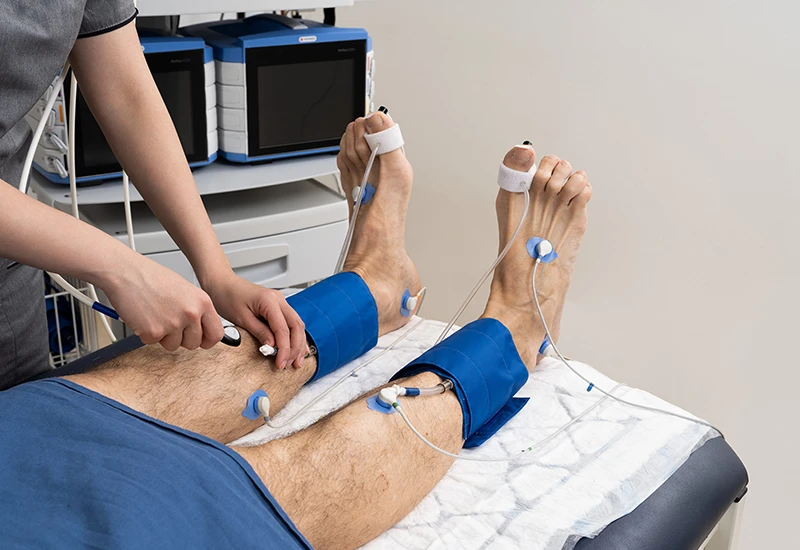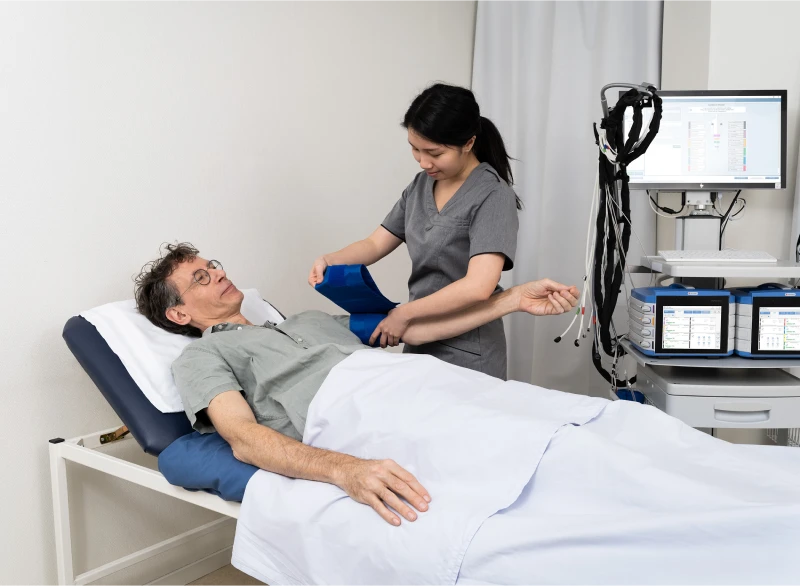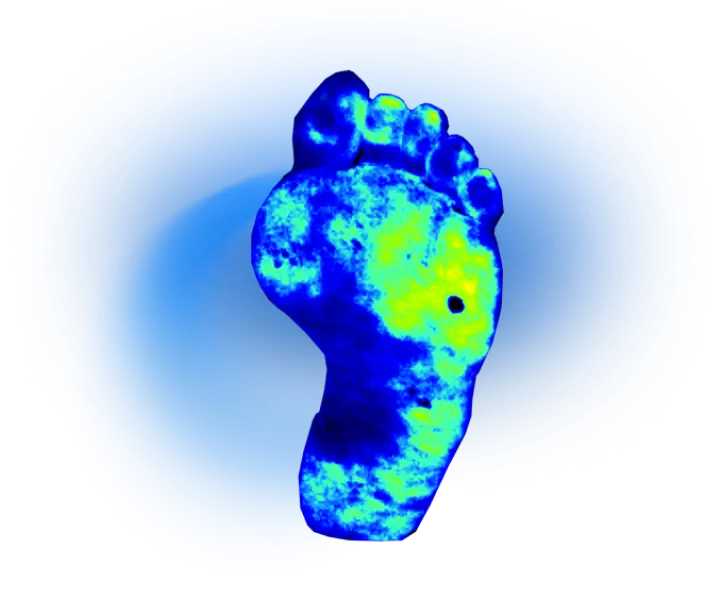Peripheral artery disease — PAD
Peripheral artery disease (PAD) affects over 113 million people globally, contributing to pain, disability, and, in severe cases, amputation. Early detection and accurate monitoring are critical for managing this chronic condition. To facilitate this, we offer noninvasive diagnostic solutions for macro- and microcirculatory assessment. We design for ease of use and patient comfort, providing insights for disease assessment, progression tracking, and treatment efficacy.

According to [1], the prevalence of PAD
increased by 72% between 1990 and 2019.
Advanced diagnostics for PAD assessment
Our devices leverage laser Doppler and advanced signal processing technologies to provide robust vascular health insights. We have designed our solutions to detect the unique challenges associated with PAD, especially in high-risk groups like people with diabetes, who are prone to complications like arterial calcification, chronic wounds, and critical limb-threatening ischemia (CLTI), and who may have falsely elevated ABI readings.
- Laser Doppler flowmetry provides real-time, noninvasive assessment of blood perfusion. Microcirculation assessment is a critical element of diagnosis in diabetic patients as conventional testing does not always reveal the reduced blood flow in small vessels prevalent in diabetes-related microvascular complications[2].
- TcpO2 offers an alternative to macrocirculation tests such as ankle and toe pressures by directly measuring skin oxygenation — a reliable indicator for people with arterial calcification. TcpO2 is especially useful in detecting areas with reduced oxygenation, a critical ischemia marker, as it indicates impaired wound healing.
- Skin perfusion pressure (SPP) is an alternative to TcpO for patients with edema or wounds on the sole of the foot. It is useful for assessing wound-healing prognosis and the effectiveness of treatment or revascularization.
- Laser speckle contrast imaging (LSCI) provides wide-area real-time visualization of blood perfusion. This non-contact, noninvasive approach is useful for monitoring the progression of PAD and identifying areas where tissue perfusion is compromised.
PeriFlux 6000 Combined for PAD
A powerful, all-in-one vascular care solution designed for efficient patient management and delivery of a comprehensive set of macro- and microvascular measurements. Equipped with noninvasive sensors, it captures a wide range of critical vascular data, including toe pressure, segmental limb pressures, TcpO2, and skin perfusion pressure (SPP).
- Supports simultaneous TcpO2 and macrocirculation pressure exams — helping to optimize time and resources.
- Comprehensive assessment capabilities — no need for multiple visits as all measurements are captured in one session.
- Heated laser Doppler probes for sensitive toe pressure measurement [3].
- EMR connectivity via DICOM/HL7 interface.


PeriCam PSI for PAD
PeriCam PSI provides a fast and accurate way to assess microcirculation in tissue by using laser speckle contrast imaging (LSCI). LSCI is a valuable tool for PAD assessment as the disease often involves impaired microcirculation. The technology provides a noninvasive way to assess blood flow in small vessels, helping to visualize areas of poor blood supply, which is crucial for identifying regions at risk of ulceration, delayed wound healing, or infection.
Contact us
Partner with Perimed for PAD assessment
Whether you’re in a clinical or research setting, Perimed is here to support you with the tools and expertise needed for effective PAD management. Contact us to learn more about how our solutions can support your PAD diagnostics and start changing outcomes.
References
- Eid, M. A., Mehta, K., Barnes, J. A., Wanken, Z., Columbo, J. A., Stone, D. H., Goodney, P., & Mayo Smith, M. (2023). The global burden of peripheral artery disease. Journal of vascular surgery, 77(4), 1119–1126.e1. https://doi.org/10.1016/j.jvs.2022.12.015
- Fuchs, D., Dupon, P. P., Schaap, L. A., & Draijer, R. (2017). The association between diabetes and dermal microvascular dysfunction non-invasively assessed by laser Doppler with local thermal hyperemia: a systematic review with meta-analysis. Cardiovascular diabetology, 16(1), 11. https://doi.org/10.1186/s12933-016-0487-1
- Settembre, N., Kagayama, T., Kauhanen, P., Vikatmaa, P., Inoue, Y., & Venermo, M. (2018). The Influence of Heating on Toe pressure in Patients with Peripheral Arterial Disease. Scandinavian journal of surgery : SJS : official organ for the Finnish Surgical Society and the Scandinavian Surgical Society, 107(1), 62–67. https://doi.org/10.1177/1457496917705994
LASCA and LSCI
Laser speckle contrast imaging (LSCI) is the innovative technology behind PeriCam PSI, offering non-contact, high-resolution perfusion imaging. The technique was first described by J.D. Briers and S. Webster in 1996 and referred to as laser speckle contrast analysis (LASCA). In later years, the term LSCI gained in popularity and is nowadays the more common term. However, LSCI and LASCA both refer to the same technique, providing precise and reliable perfusion data without the need for contrast agents.
